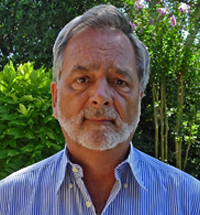

 acant hotel rooms are aplenty in Vienna this year and prices negotiable. In the month before ECR, one hotel chain even called former guests and congress participants directly and offered good deals.
acant hotel rooms are aplenty in Vienna this year and prices negotiable. In the month before ECR, one hotel chain even called former guests and congress participants directly and offered good deals.
For some reason or another, I chatted with more people in the corridors or more people approached me than at earlier ECRs in Vienna. The economic crisis is one of the main topics for many of these congress participants, a crisis not only for the commercial companies, the manufacturers and vendors, but also for the radiologists, the health system at large, and, apparently, hotels in the Austrian capital.
The ramifications in medical imaging are wide-stretching, not only into new investments but also into imaging strategies in general. "Why buy a new CT if the old one is still good, reimbursement down, and the patients' outcome the same?"
I watched a conclave of dark-suited businessmen looking grimly through the windows of the Austria Center at the gray skies of the surrounding world. The last year had not been nice, and the empire had been stricken. Corruption scandals, products with dangerous side effects – "metus est plena." There is plenty of fear, commercial and personal, the sharpened sword of Damocles hanging directly above their heads by a single horsehair. The future seems not as bright as it was some years ago.
Others see it differently and, smilingly it seems, jump into the fray. Some new companies have turned up at the commercial exhibition, even some targeting the ailing contrast agent market, either with novel products or with generics. Good luck to them.
![]() Radiologists live in their little worlds, even when they talk about globalization and "our European house."
Radiologists live in their little worlds, even when they talk about globalization and "our European house."
The house is to be heated, and the money for it should come from the companies. Everybody wants to arrange his or her small or big congress, but as one of the officials of ECR puts it, the financial support in dire times must by concentrated on the big conferences, not on the small ones. For sponsors, there is better return on investment with the bigger meetings, he insisted.
However, an increasing number of small conferences in Europe cater to getting CME credits in subspecialties, a return of national and regional meetings. If you want to keep your license, there is no way around them. On the one hand, people want to hear difficult contents in their mother tongue and be able to ask questions. On the other hand, the CME requirements are getting tougher and more bureaucratic. It is easier to fulfill them locally, without too much fighting with the offices in charge of CME accreditation.
One male radiologist commented: "The problem of the future is rather subspecialization and the connected certifications. Not a big congress and commercial fair. What do you need for a good CME meeting? A handful of good speakers, pedagogically trained, and an auditorium. If the participants want fringe benefits, they pay cash out of their own pockets, including that pizza dinner with a bottle of red wine."
It's a dilemma, according to one participant, that the radiologists in charge of the program of the ECR are all "academicians," "having their heads in the clouds; they are so distant from reality in daily radiology."
For many radiologists out in the field, dealing with patients and referring physicians, the contact and understanding they get from company representatives is better and deeper than the comments they get from the university bigshots.
"The critical assessment is missing," one female radiologist from Italy comments. "The university radiologists are so far away from our life and daily problems. But I meet colleagues from all over Italy and we talk. The interesting part is the refresher courses, the exhibition, and Vienna."
Another opinion: "I wonder what the ECR rationale is. So much precious time is taken up with all these product-related lunch sessions that lure people away from the mainstream courses. The ECR appears to be practicing blatant commercialism rather than education."
Still there are many others: When I watch those happy participants in the corridors, in the lecture halls, at the commercial exhibition, unconsciously, I suppose, I demand that they conform to my ethical or moral concepts – the straight old Prussian concepts. I don't know if they are still applicable, and they couldn't care less. They want to have fun and some easily digestible information, and for the rest – who cares?
Mañana, domani, morgen, savtra, tomorrow. There is no suffering, except for the young speakers. They suffer and look stressed. I did, too, at their age. But I suspect that those who look relaxed and laugh deal as well or better with their patients than those serious-looking career-prone doctors.
Correct me if I am wrong.
Citation: Rinck PA. From ECR 2009:
Walking down the corridors … . Rinckside 2009; 20,2: 3-4.
A digest version of this column was published as:
Rinck PA. ECR at Vienna 2009: Walking down the corridors.
Diagnostic Imaging Europe. 18 March 2009.
Rinckside • ISSN 2364-3889
is published both in an electronic and in a printed version. It is listed by the German National Library.

Rinck is my last name, and a rink is an area in which a combat or contest takes place, rinkside means “by the rink”; in a double meaning “Rinckside” means the page by Rinck.
Sometimes I could also imagine “Rincksighs”, “Rincksights”, or “Rincksites” ... More